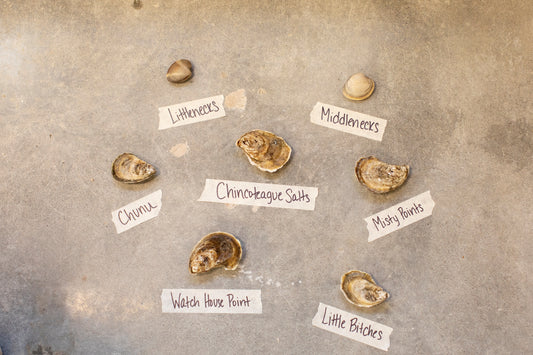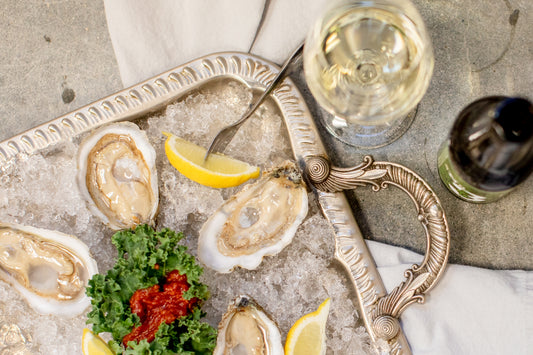What the shuck do I do with these things?
- Q: How should I store my clams?
- A: The refrigerator is ideal, but a cooler with ice will do in a pinch. Just make sure those babies can breathe! If you do use ice, avoid direct contact with our shells. Insulate them from ice by using butcher paper, trays, seaweed, or a container like a basket.
- Q: What about when I'm ready to eat them?
- A: Just prior to consuming remove them from the refrigerator and rinse them with cold running water in a colander. Do not consume a clam if its shell is cracked.
- Q: How long will my clams last?
- A: If properly handled and refrigerated, our clams should last at least 7 days.
- Q: How do I know when they're done cooking?
- A: Clams are fully cooked when they open completely. Sometimes the muscles that keep the shell closed is extra strong, though. You can always pry them open!
- Q: Can I eat clams raw?
- A: Sho' nuff can! If you have certain health conditions that place you in an at-risk category you shouldn't though. If you're unsure if you fit into an at-risk category - call up that doctor of yours!
- Q: How should I store my oysters?
- A: The refrigerator is ideal, but a cooler with ice will do in a pinch. Make sure your oysters stay cold and dry and never sit in fresh water. If you aren't going to eat them right away give them a little extra tender loving care by arranging them cupped side down on a tray with a damp towel over the top.
- Q: How long will my oysters last?
- A: Because our product is so fresh oysters last up to 7-10 days if you can keep from eating them (and depending on the time of year)! If your oyster shells start "gaping" and don't close back up when tapped gently they've gone bad.
- Q: A word about "gapers"
- A: When they're out of the water shellfish will sometimes open their shells. Don't worry - nothing is wrong! Just tap gently on the shells. If they close they're fine. If not, discard them.
- Q: Why is there a miniature crab in my oyster?!
- A: You've found a Pea Crab! They're actually safe to eat too, and are even considered a delicacy in some places.
- Q: Is this worm in my oyster normal?!
- A: You've likely found mudworms, or Polydora websteri. They’re naturally occurring and found in almost all East Coast waters. When seasons change they tend to be more active, so while they normally hibernate in caverns in the oyster shell and you don’t see them (even though they’re often there) they can become more active certain times of the year or after being disturbed when they’re packed, boxed, and shipped. They form symbiotic relationships with oysters and while they’re ugly, don’t actually hurt anything.



